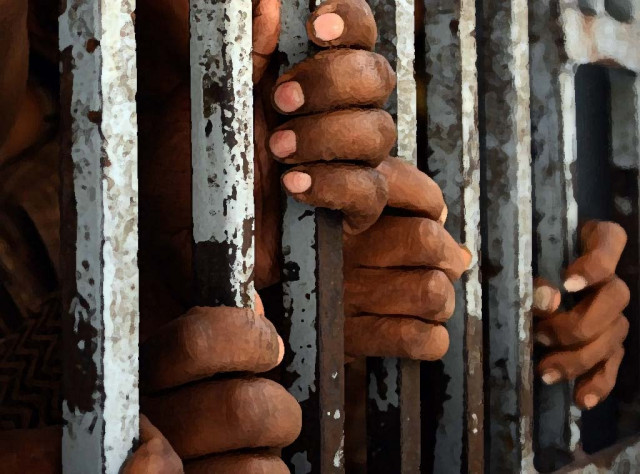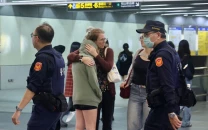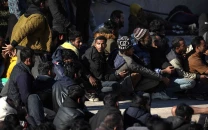Deaths in police custody revive Egypt rights fears
Egypt's government denies wrongdoing in the incident, and the interior ministry has pledged a full investigation.

Egypt's government denies wrongdoing in the incident, and the interior ministry has pledged a full investigation. PHOTO: AFP/FILE
He had been arrested four days earlier, on August 14, when security forces began clearing a protest camp against the ouster of Egypt's elected president Mohamed Morsi.
The president, a Muslim Brotherhood member, was deposed by the army on July 3 after massive protests against his rule.
But Siyam's friends and family insist he wasn't camped at the protest - he had even joined rallies against the army and the Brotherhood, and considered a parliamentary run as an independent.
They say he rushed to the camp site in the naive hope of convincing both sides to avoid violence.
However he found himself at the scene, what happened next is not in dispute: he was arrested, and became one of 37 prisoners who died in a van full of tear gas on August 18.
Egypt's government denies wrongdoing in the incident, and the interior ministry has pledged a full investigation.
But human rights activists and relatives of those killed accuse authorities of responsibility for the deaths.
The official story of how the prisoners died has evolved, with state news first saying gunmen had ambushed the prisoner convoy as it approached Abu Zaabal, north of Cairo.
Later, state news agency Mena said the prisoners had taken a policeman hostage inside the van, prompting officers to fire tear gas into it.
"Thirty-seven supporters of the deposed president suffocated to death inside the transport van," Mena said.
An interior ministry statement matched that account, adding that some of the prisoners had been trampled in the panic, and the police officer had escaped with injuries.
Osama al Mahdy, a human rights lawyer, met Siyam years earlier, and stayed friends with the 29-year-old communications engineer.
He had no idea his friend had been arrested until August 19, when he discovered Siyam's family was among those waiting outside Cairo's Zeinhom morgue for news of their loved ones.
Mahdy's work means he is no stranger to death, but even he was shocked by the condition of Siyam's body.
"The bodies from the prison were very swollen, and the faces were very blue, almost black," he said.
Mahdy took pictures of the bodies and posted them on Twitter, in part to dispel theories that the prisoners had been shot.
He examined the 20 bodies of prisoners he saw inside the morgue and found no signs of bullet wounds.
The blackness of the faces led some to speculate that the bodies were burned.
But Human Rights Watch researcher Priyanka Motaparthy showed pictures of the bodies to a forensics expert who said that was more likely a result of decomposition.
"He was very surprised at the state of decomposition of the bodies," she said.
But he told her it could be due to poor storage of the bodies, and that black areas could be the result of blood pooling.
Mahdy at first questioned whether the prisoners had died earlier than reported.
But Siyam's family confirmed that their son had been alive on Saturday afternoon, the day before his death.
After days without word of him, and a frantic search of Cairo's police stations, they had finally found him on Friday.
They saw him that day, and one final time on Saturday afternoon, his sister Lamia told AFP.
Death from tear gas is relatively rare, according to experts.
"There is a huge gap between when the gas... is effective and when it is deadly," according to Sid Heal, a retired commander with the Los Angeles Sheriff's Department and an expert on crowd control.
And the van would have had to be sealed, said Alistair Hay, a professor of environmental toxicology at Leeds University
"If the doors had been opened there would almost certainly have been no deaths, only people overcome by the effects of the tear gas," he told AFP.
This is the idea that haunts Sherif's sister Lamia,
"How could they lock people, human beings, inside a truck?" she said.
"Are you trying to tell me you didn't hear people screaming to death, screaming for fresh air?
"This is not a mistake, this is a murder."
Mahdy is equally forthright.
"It's a crime," he says, "no matter how they died."
"The police and the government are responsible for these people, even if they are under arrest."
For him, the deaths are a sign that little has changed in Egypt, two years after the 2011 uprising, which included calls for human rights and justice.
"After the revolution, I thought the human rights situation would change," he said.
"But the reality didn't change, in fact it is getting worse, because now the government feels that whatever it does, no one will say anything."



















COMMENTS
Comments are moderated and generally will be posted if they are on-topic and not abusive.
For more information, please see our Comments FAQ